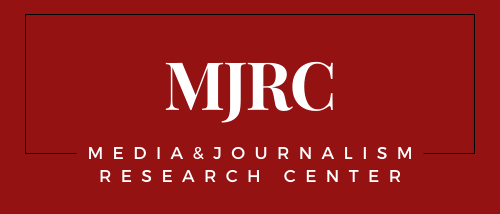Slovakia’s Misinformation Barons
28 August 2019
The Slovak misinformation industry is growing fast, buoyed by ads and e-commerce, but many people support them directly, too, through donations or tax designations.
Before the Slovak presidential elections last March, the website Zem a Vek published an edited picture featuring Zuzana Čaputová, later elected the country’s president, with a hooked nose and bigger lips, clearly an attempt to make her look more Jewish, as stereotypes go. The picture was taken from the DennikN, a Slovak news portal, and shamelessly photo-shopped to produce the desired effect.
Such content brings Zem a Vek, a Slovak misinformation website, hefty revenue. Sofian, the company that runs Zem a Vek (meaning “Earth and Age” in Slovak), had sales revenues of more than €430,000 in 2018. That is more than sufficient for Tibor Eliot Rostas, Sofian’s owner, to live a comfortable life in a country where people bring on average €1,000 home every month. A former producer of a television children’s show, Rostas made Zem a Vek the largest misinformation player by revenue in Slovakia.
But competition is growing. Some 57% of the websites analyzed in “Snake Oil Spills Onto the Web,” a report released by the Center for Media, Data & Society (CMDS), were created between 2013 and 2016.
“The Slovak misinformation and disinformation website scene appears to be run by multiple independent entities using various business models to sustain operation,”
Jozef Michal Mintal, the report’s author, wrote.
The report, which distills findings of research and investigations that dredged up data about ownership and financial resources of misinformation websites, identified four key sources of revenue that keep these platforms afloat: tax designations (money contributed by Slovak citizens from their tax liability, as allowed by law), sales of goods and services (including books, dietary supplements and mugs, among many things), crowdfunding and advertising.
Of all these sources of revenue, advertising and e-commerce seem to sustain most of the country’s bogus sites. Some 77% of the 49 websites analyzed in the study either display ads or sell goods and services. Slobodny Vysielac, a news-focused website, is the most successful when it comes to crowdfunding, generating roughly €100,000 a year from people’s donations.
Slovak misinformation websites are not terribly transparent when it comes to their finances and owners. But it is health and lifestyle websites with an unclear or concealed background that are in the highest numbers, wrote Mintal who found six categories of misinformation platforms: health and lifestyle, ideological or supporting a cause, news-focused, Christianity-related, paranormal and blogs.
“Snake Oil Spills Onto the Web” was published as part of The Business of Misinformation, a CMDS project aimed at keeping track of the individuals and companies that own misinformation websites and their links to institutions, parties and other individuals. The project canvasses websites that systematically and methodically create and target false information to persuade audiences to adopt ideas and ways of thinking embraced by their original promoters or their sponsors, be those political, social, economic, health-related or else.
The project is now run in Bosnia & Herzegovina, Serbia, Hungary, Slovakia and the Czech Republic, with plans to expand to other European countries and Asia in the following year.
Support independent media research – your donation helps keep our work open.
Donate
